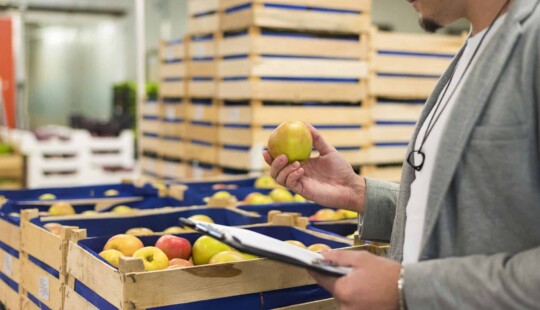Anyone who has ever watched the hot rolling process in a steel mill will instantly understand the color palette of the Salzgitter AG brand, one of the largest steel producers in Europe. The bright, glowing orange at the center is surrounded by a tempering blue-grey symbolizing its core identity: people, steel, and technology.
Read Salzgitter AG’s story: Changing Our Planet and the Steel Industry
Pioneers in Circular Solutions
The German giant recently relaunched its brand to reflect its strategic vision to become the leader in circular economy solutions, hence the circular logo with a triad of people, steel, and technology in the center. Three elements – circular mindset, pioneering partnerships, and sustainability solutions – are needed to bring the strategy to life.
“Our mission is to transform the industry, so we can produce steel without emitting CO2,” says Gunnar Groebler, CEO and chairman of the Executive Board of Salzgitter AG. “Currently, about two tons of CO2 are emitted per ton of steel produced in the traditional way. We aim to replace coal with hydrogen, reducing emissions to virtually zero. We’ll be delivering green steel as of 2025.”
Steel is the world’s most important engineering and construction material. It is used in every aspect of our lives, from cars and cargo ships to surgical scalpels and spoons. It’s also one of the most sustainable materials because it can be recycled endlessly.
Salzgitter AG is in the process of redefining its business model, moving from the linear approach to a circular one that reduces, reuses, and recycles energy and materials – and, most importantly, continuously rethinks the process.
True circularity requires joint product lifecycle planning and holistic processes in full collaboration with partners and suppliers across the entire value chain. “We’ve been in a classic relationship with our customers, which ends when the product is handed over. We’re working with them to take back the products after use, so we can reuse them or reintroduce the material into the production cycle,” Groebler explains.
Partnerships across the Value Chain
The company and its subsidiaries have been producing steel for over 150 years. Peiner Träger, for example, is already melting around 1 million tons of crude steel from steel scrap in one of its electric steelworks in an environmentally friendly and energy-efficient manner. Its high-quality products are a clear testimony that steel can be recycled without any loss of quality.
“I worked in the utilities industry for over 20 years, so I’ve witnessed the move from lignite, or soft coal, to offshore wind – a massive transformation. Seeing what was possible within a decade or so is highly motivating for me,” says Groebler. “I realize that by driving this transformation at Salzgitter AG, we are ultimately moving the entire industry to a more sustainable way of production.”
He is amazed at how many companies are redefining their role from being customers to partners.
“We’re all transforming together,” he explains. “Our customers need to fulfill their own targets. Take the automotive industry: not only do they have to decarbonize the vehicle itself, but they also decarbonize its use throughout its lifetime. Considering that steel is a prominent part of the vehicle, our automotive partners expect us to decarbonize steel.”
Groebler thinks a lot about the expectations of society. Today, Salzgitter AG emits roughly 1% of the German CO2 footprint, about 8 million tons per year. The good thing is that most of it is generated in one spot, making it easier to manage reduction efforts, versus the effort that goes into reducing emissions generated by combustion engines in cars, which are all over the place. With the strategy and funding already in place, Groebler is confident Salzgitter AG can reach net zero in the next 10 years.
Sustainability Tools and Solutions
Groebler is also very mindful of how environmental, social, and governance (ESG) factors are impacting brand reputation. Sustainable business practices play a major role in reducing greenhouse gas emissions and conserving resources, and companies that actively pursue them benefit from increased trust and loyalty among customers and consumers, creating opportunities for improved market share.
“If you consider the way ESG is developing, we need to look at environmental data in the same way we look at financial data. We’re experts in steel production, but not in handling data,” says Groebler. “This is where SAP comes into play. SAP helps us really consolidate the data and get full transparency on our carbon footprint in an easy way.”
Salzgitter Group is achieving greater ESG transparency with the data analytics and business logic functionality in SAP S/4HANA. Along with SAP Sustainability Footprint Management and SAP Sustainability Control Tower, the company uses SAP Environment, Health, and Safety Management to gain deeper insight into its environmental data and maintain safe and sustainable operations.
There have been some highly visible changes since Salzgitter Group embarked on its journey to circularity. Six massive wind power turbines, each 150 meters high, have reshaped the skyline over the steelworks. A lot of development is happening behind the scenes. Hydrogen production will not take place exclusively on-site, so the biggest challenge is sourcing it from other locations and creating the necessary infrastructure. During the transitional phase, the company will use a mixture of natural gas and hydrogen before switching exclusively to hydrogen.
Groebler is highly optimistic: “We’re seeing a sweeping cultural change within the Salzgitter Group. Employees are engaging proactively, from an employee cooperative to finance a photovoltaic system to our local tree-planting campaign – our sustainable business approach has a positive, far-reaching impact everywhere in our organization.”
Together with customers and suppliers, technology partners like SAP, and its people, Salzgitter AG is clearly leading the way to a circular future.
For more information on how SAP helps companies record, report, and act on their sustainability goals, visit www.sap.com/sustainability.



